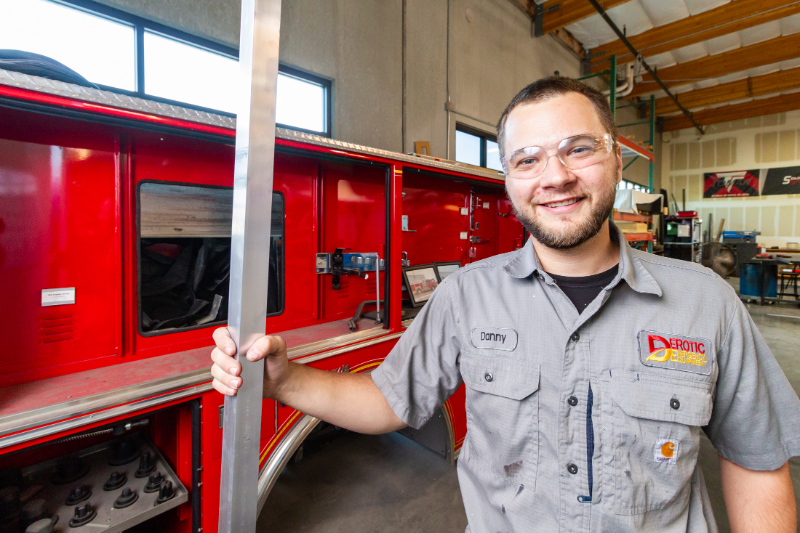Maintenance Challenges in Different Types of Emergency Vehicles

Emergency vehicles—whether they’re ambulances, fire trucks, or police cruisers—have to overcome several unique maintenance challenges. From electrical systems to braking mechanisms, each type of emergency vehicle has its own complications.
Ambulances: A Balance Between Weight and Speed
Ambulances are essentially mobile hospitals, loaded with medical equipment, supplies, and life-saving technologies. All that extra weight puts an immense strain on the vehicle's suspension, braking systems, and driveline components. As emergency vehicles, they need to accelerate quickly and stop on a dime, a feat made even more difficult when you're hauling all that extra gear.
Frequent Brake Overhauls
One of the primary maintenance challenges in ambulances is brake wear. They frequently endure sudden stops, which can lead to premature brake pad wear and tear on the rotors. Over time, heat buildup from these high-speed stops can cause brake fade, which reduces the braking power. In high-demand areas, regular brake system inspections—particularly the compressed air tanks and airlines in larger ambulances—are crucial.
Weight Distribution Issues
Another challenge is ensuring proper weight distribution. An improperly loaded ambulance can lead to uneven wear on tires and suspension systems, affecting handling and braking. Fleet managers must be vigilant in ensuring the weight of medical equipment is balanced, or risk creating a dangerous driving scenario.
Fire Trucks: Heavier Payloads, Complex Systems
Fire trucks are some of the largest emergency vehicles on the road, built to carry massive payloads, from hoses and ladders to hundreds of gallons of water. Due to their size and complexity, they present unique maintenance challenges that differ from other types of emergency vehicles.
Hydraulic Systems and Pump Maintenance
The hydraulic systems in a fire truck are vital for powering ladders and water pumps. These systems need constant maintenance, as a single leak or failure can be catastrophic in the middle of a fire emergency. Regular checks on hoses, seals, and the hydraulic pump are necessary to ensure smooth operation. Fire trucks also carry an auxiliary pump, often run by a PTO (Power Take-Off) unit, which requires its own separate maintenance checks to ensure water is delivered at the right pressure when needed.
Wear on Driveline Components
Given the heavy loads fire trucks carry, driveline components such as the transmission and differentials often suffer significant wear and tear. Fire trucks rely heavily on low-range gearing to manage their massive payloads, and without regular inspection, these parts can fail at the most critical times.
Police Vehicles: High-Speed and Reliability
Police vehicles might seem like your average sedan or SUV on the outside, but underneath the hood, they're anything but. These emergency vehicles are designed for high-speed chases, quick maneuvers, and long hours of idle time, creating a unique mix of maintenance challenges.
Engine Wear from Extended Idling
Unlike other emergency vehicles, police cars are often left idling for extended periods, waiting for dispatch calls. This puts considerable strain on the engine and its cooling system. Extended idling leads to carbon buildup in the intake system and throttle body, which can cause the engine to run less efficiently. Routine engine decarbonization is crucial to keep performance levels optimal.
Transmission Stress
Frequent stop-and-go driving, along with high-speed pursuits, puts a lot of stress on the transmission system in police cars. This constant change in driving conditions can lead to transmission overheating, which is why many modern police vehicles are equipped with an external transmission cooler. However, these coolers can become clogged over time, necessitating regular cleaning and inspection.
Ambulances, Fire Trucks, and Police Vehicles: Shared Challenges
Electrical Systems and Battery Life
Today’s emergency vehicles are more reliant on electrical systems than ever before. From LED lights and radios to computerized dispatch systems, the electrical load is significant. This can lead to premature battery failure if the alternator isn’t functioning optimally. Routine checks of the alternator belt and battery connections are essential to keep these vehicles powered up and ready to go.
Tire Wear from High-Intensity Use
Emergency vehicles are constantly on the move, often at high speeds or in extreme conditions. Tire wear is a common issue across all emergency vehicle types, with police cars and ambulances being particularly susceptible to uneven wear due to hard braking and sudden accelerations. Regular tire rotations and inspections for cracks or balding are non-negotiable.
Preventive Maintenance: The Key to Longevity
The solution to most of these challenges lies in preventive maintenance. Emergency vehicles don’t have the luxury of regular downtime, which is why mobile service and fleet maintenance are so critical. Setting up a schedule that includes regular oil changes, brake inspections, and cooling system checks can save money and, more importantly, lives.
Safety is Everything
Maintaining emergency vehicles isn’t just about keeping them on the road—it’s about ensuring they perform at peak capacity when lives are on the line. After all, when it comes to emergency vehicles, downtime is simply not an option.
If your commercial or government emergency vehicle needs repairs, sales, and fleet services in Rancho Cordova and San Bernardino, CA, contact Derotic Emergency Equipment today!
Contact Us
We're your one-stop shop for emergency and commercial vehicle repair and maintenance services in Rancho Cordova, Sacramento & San Bernardino, California. Get in touch with us today to schedule repairs or inquire about sales.
Locations
Rancho Cordova, CA 95742
1833 Riverview Dr, Suite E,
San Bernardino, CA 92408

